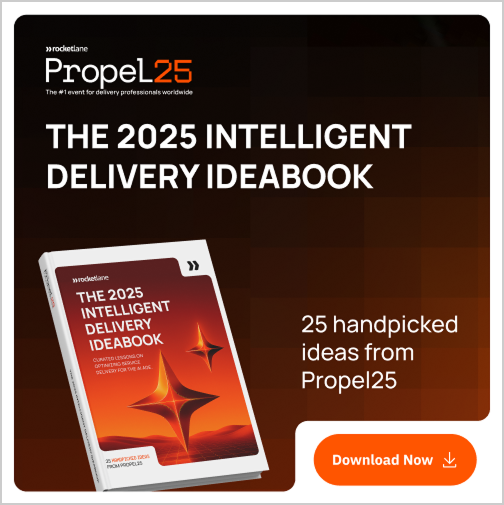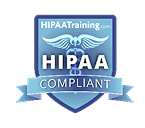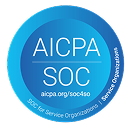In this guide, we examine the top five PSA tools in the market and discuss what you need to know before choosing the right solution for your business.
1. Rocketlane
Rocketlane’s PSA capabilities are designed to optimize project delivery and enhance the customer experience. It offers multiple capabilities to streamline workflows, reduce time to value, and ensure transparent communication between service teams and clients. Rocketlane helps organizations accelerate the project lifecycle while ensuring clients stay engaged throughout the journey.
Key features
Rocketlane is designed from the ground up to focus on the three crucial pillars of project delivery: projects & processes, people & finance, and customer experience & accountability:
- Project management: Comprehensive project management capabilities that ensure all projects are streamlined, transparent, and scalable. Rocketlane’s customizable dashboards and reports help you track key metrics and gain deep insights tailored to your specific needs. It also comes with easy-to-create project and document templates for consistency across projects and reducing redundant work.
Rocketlane's 360° project view keeps you informed and proactive – while surfacing timely insights on time-to-value, resource allocation, and project performance for continuous improvement. - AI-powered resource management and allocation: Rocketlane’s Resource AI allocates the ideal team for each project by matching specific skills to project needs – while maintaining balanced workloads.
It also comes with robust resource management capabilities to effectively plan, schedule, and allocate resources. Resource management features include tracking team members’ work hours, balancing workloads, and ensuring no resource overages or shortages.
Rocketlane’s Skills Matrix provides an overview of team members' skills and proficiency levels. This is a great value-add for enterprise clients who need to quickly identify the best people for specific projects based on their expertise.
- Branded client portals: With Rocketlane’s customer portal, you can keep clients engaged throughout the project lifecycle with integrated chat, real-time notifications, and self-serve sections like FAQs and training materials. Additionally, you can even customize the portal to align with the branding and style of your client.
Check out this video to know more: Rocketlane’s next-gen customer portal. - Financial management: Rocketlane’s comprehensive suite of financial management features to manage project budgets, track actual costs, and optimize revenue streams include:
- Rate cards and cost rates: To standardize billing and cost rates across projects, tracking costs based on actual resource utilization.
- Time tracking and billing: To capture actual time spent on tasks, and select from fixed fee, time and material, or non-billable billing types for greater flexibility.
- Financial reporting: To gain insights into budget usage, revenue forecasts, and project profitability. Portfolio reports support effective revenue recognition and financial planning across multiple projects.
- Revenue recognition and invoicing: Rocketlane comes with a powerful and flexible revenue recognition system that allows you to manage your revenue schedule with both automation and customization. You can standardize your revenue recognition process by translating unique rules into one streamlined system, ensuring granular control over which hours count toward revenue, whether based on approval status, roles, or departments.
With Rocketlane, you ensure that you recognize only the relevant hours—those that are billable, approved, or aligned with your goals— and keep your records clean and compliant.
Pros
Here’s what makes Rocketlane one of the top PSA tools in the market today:
- Customer-centric design: Features a fully customizable customer portal that acts as a unified hub for clients to access updates, collaborate, and manage their project experience.
- Central data hub with actionable insights: Houses all your data in one place, serving as the central source of truth. The Business IQ feature provides deep insights into project profitability, portfolio performance, time analytics, and team utilization.
- Automation: Rocketlane streamlines project management with customizable templates, automated status updates, and CSAT surveys to keep tasks on track. The project plan feature improves clarity around timelines, ownership, and deadlines, for smooth customer onboarding and timely task completion.
- Focus on client collaboration and accountability: Rocketlane is designed to maximize customer accountability by providing clients with real-time visibility into the progress of their projects. This feature allows them to track project status directly and communicate with project owners through an integrated chat function.
They can share files within the chat, and project owners can audit conversations, ensuring that relevant information is shared with the team. This system improves transparency, keeps stakeholders aligned, and promotes better communication throughout the project lifecycle. - Optimized resource management: Rocketlane’s Resource AI and Skills Matrix make team allocation efficient and ensure a balanced workload.
- Process governance: Streamlines workflows and ensures compliance with standardized processes, reducing errors and inefficiencies.
- AI-driven productivity: Empowers teams to focus on impactful work by
- Generating high-quality project summaries, follow-ups, and updates automatically
- Handling note-taking to free up your team’s time, allowing them to focus on building stronger client relationships.
- Minimizing unbillable tasks and reducing manual errors and repetitive work.
Cons
Rocketlane’s cons as reported by our users include:
- Limited user behavior analytics: The platform lacks built-in user behavior analytics or a detailed dashboard, making it difficult to track engagement and assess project performance effectively.
- Frequent notifications: Some users find the number of notifications overwhelming, leading to potential information overload.
Customer reviews
On G2, with a 4.8/5 rating, Rocketlane is recognized as the #1 easiest-to-use tool in the Professional Services Automation software category with reviews like this one:
Project Management and Automation with a Customer Perspective – It's new and doesn't have any of the technical debt you see in other solutions. I love that they provide a Customer Portal - a place that our customers can go to at any time and immediately see the status of their project, tasks status (filterable by type and by owner), announcements, attachments, and form capability for our customers to submit feedback directly into the project as a task (and the ability the track that feedback). The Customer Portal is fantastic. It also means we save a lot with licenses and don't have to struggle with access or permissions and try to teach our customers how to navigate the application itself. Customers have one place where they can see everything they need to see and they can share or invite others - G2 review
On TrustRadius, Rocketlane scores an impressive 8.8/10 for its efficient resource management and strong project visibility.
Pricing
Rocketlane’s plans start at $19 per team member/month billed annually. You can find the best plan for your team on the Rocketlane pricing page.
Ideal for
Rocketlane is the ideal easy choice for small, mid-sized, and enterprise businesses looking for an all-in-one platform to manage their delivery process from start to finish. It's especially useful for heavily client-focused companies in a high-growth phase looking for the right systems and processes in place to keep up with that growth.
2. Kantata (Formerly Mavenlink)
Kantata is a professional services automation platform used by over 2,500 organizations worldwide. Designed for mid-to-large-sized service businesses, it streamlines resource planning, project execution, and operational performance. It integrates project management, financial oversight, and collaboration tools to help teams manage resources efficiently, track progress in real time, and stay on budget.
Key features
Here’s what Kantata’s PSA capabilities can help you with:
- Resource management: Allows teams to evaluate multiple resource plans simultaneously and assess how allocation impacts profitability. Supports external collaboration with role-based permissions, skills tracking, and cost rate management.
- Financial tracking and reporting: Includes invoicing, revenue recognition, and budgeting tools for financial transparency.
- Business intelligence and reporting: Provides over 60 service-focused reports, customizable dashboards, and automated data extraction for integration with external BI tools.
- Customer sentiment and feedback integration: Captures client and employee feedback throughout project delivery, combining sentiment data with operational metrics for a holistic view of project health.
- Collaboration and communication: Centralizes project communication and enhances visibility for both internal teams and external stakeholders, with role-based access controls.
- Integration capabilities: Connects with platforms like Salesforce and offers over 1,200 prebuilt connectors. API-driven workflows enable automation across systems to boost efficiency.
Pros
Kantata is one of the best PSA tools in the market today for its:
- Real-time budget tracking and project burn rate monitoring
- Simple time-entry features for seamless timekeeping
- Strong integration with Google Drive for document management
- Advanced forecasting tools for project cost and duration estimation
- Customizable dashboards tailored to different team needs
Cons
While Kantata offers multiple advantages, it falls short in::
- Limited project management capabilities: Kantata falls short in a few project management features including process governance, automated updates, and customizable stakeholder views. Businesses often need additional tools, leading to fragmented workflows and manual data entry.
- Steep learning curve: Kantata’s extensive feature set and complexity make daily use challenging for fast-growing teams.
- Complex reporting and siloed data: Generating reports often requires coding knowledge or developer support. Data fragmentation makes consolidating project, financial, and resource insights cumbersome, limiting real-time visibility into bottlenecks and budget control.
- Low focus on client engagement: Kantata offers limited capabilities for status updates and sentiment monitoring, thereby narrowing its impact on client communication and relationship-building.
- Cumbersome time tracking: Time tracking in Kantata requires manual input or calendar imports, making the process more tedious than necessary.
Customer reviews
With a G2 rating of 4.2/5, customer reviews include positive mentions of Kantata’s analytics, scalability, and ability to centralize project data and negative ones of its steep learning curve and unintuitive UI.
On TrustRadius, Kantata has a rating of 7.9/10 with positive feedback on reporting and real-time visibility, with some users finding the platform complex for beginners.
Pricing
Kantat’s pricing is available only upon request; it offers customizable plans tailored to different business sizes and needs.
Ideal for
Kantata’s robust PSA capabilities make it a great fit for mid-market and enterprise service companies that need advanced resource and financial management capabilities.
3. Certinia PS Cloud
Certinia PS Cloud (formerly FinancialForce PSA) is a Salesforce-native platform used by over 1,400 customers across 30+ countries. Designed for services-driven businesses, it combines resource management, project management, financial oversight, and customer engagement into a single system.
Key features
Certinia PS Cloud’s key PSA capabilities include:
- Resource management: Allocates resources based on skills, availability, and project needs, ensuring optimal staffing while preventing under- or over-utilization.
- Revenue management: Automates revenue recognition and forecasting, offering clear insights into financial performance while reducing manual errors.
- Project and financial analytics: Provides real-time insights into budgets, resource usage, and profitability, with predictive analytics to improve decision-making.
- Collaboration and integration: Seamlessly integrates with Salesforce, aligning sales, finance, and project teams with a shared data source.
- Billing and revenue recognition: Supports multiple billing models (usage-based, subscription, fixed-fee) with automated invoicing to maintain compliance.
- Streamlined estimation: Automates quote creation, resource planning, and project delivery to enhance proposal accuracy and win high-value contracts.
Pros
Certinia PS Cloud makes it to this list of top PSA tools for service providers for its:
- Real-time tracking of project profitability
- Deep integration with Salesforce
- Strong financial and resource management tools
- Predictive analytics for data-driven decision-making
Cons
- Not optimized for customer-facing projects: Relies on Salesforce Communities for client updates, making customer engagement less flexible.
- Limited project management and collaboration: Lacks built-in document sharing and task-specific discussions, requiring additional tools.
- Rigid reporting: Custom reports often require Salesforce admin support, pushing users toward spreadsheets for detailed insights.
- Cumbersome time logging: Manual time entry without seamless calendar integrations adds unnecessary complexity.
- Manual effort for resource planning: Resource requests and project efforts are disconnected, leading to time-consuming manual updates.
- Complex implementation: Requires significant setup effort, often needing external consultants for integration.
Customer reviews
Certinia PS Cloud has a solid 4.3/5 rating on G2 with customers highlighting its ease of use and reporting capabilities.
On TrustRadius, Certinia Plus Cloud has a rating of 7.1/10 with positive mentions of its flexibility and service features, and some negative feedback on its capabilities to oversee multiple projects.
Pricing
Certinia offers scalable, per-user pricing with bundles or a la carte licenses.
Ideal for
Since it is a Salesforce-native platform, Certinia PS Cloud is ideal for enterprise or mid-market companies as well as existing Salesforce users in the Information Technology (IT) and consulting sectors.
Check out how Rocketlane helped LivePerson streamline their PS operations by escaping the Certinia-Smartsheet duo.
4. Autotask PSA by Kaseya
Autotask PSA is a cloud-based IT service management platform designed to streamline operations for IT service providers and Managed Service Providers (MSPs).
With customizable dashboards and widgets, Autotask PSA provides a comprehensive view of business operations while enabling data-driven decision-making. Its automation capabilities cover key processes like ticketing and billing, while centralized alert management, project tracking, and reporting further improve efficiency. Additionally, the platform integrates with over 250 industry tools, making it a versatile solution for IT-focused businesses.
Key features
Here’s how Autotask’s comprehensive suite of features streamline service operations:
- Automated ticketing workflows: Autotask PSA streamlines ticketing by automating processes like ticket creation, routing, and resolution, minimizing manual intervention and ensuring faster issue resolution based on predefined standards.
- Intuitive project milestone tracking: The platform helps teams monitor project milestones, track progress against deadlines, and allocate resources efficiently to keep projects on schedule.
- Centralized reporting: Real-time visibility into key performance metrics allows users to generate customizable reports for better decision-making, resource planning, and financial forecasting.
- Automated usage-based billing: Flexible contract management and automated billing ensure accuracy, reduce errors, and simplify financial operations for IT service providers.
- Seamless integrations: With compatibility across 250+ industry tools, Autotask PSA allows businesses to enhance their existing software ecosystem within a unified platform.
Pros
Autotask PSA is one of the best PSA tools for service providers thanks to its focus on:
- Comprehensive functionality for IT service providers: Autotask’s PSA capabilities mainly target IT service providers and MSPs through its ticketing, project management, and billing capabilities. Its pre-configured workflows and IT-specific terminology enable quick setup and seamless implementation.
- Cost-effectiveness for entry-level companies: The platform offers affordable pricing for smaller IT service businesses or MSPs.
Cons
While powerful, adopting Autotask PSA comes with a few challenges, such as:
- Customization challenges for non-IT services: Businesses outside the IT sector may struggle with Autotask PSA’s IT-specific workflows and terminology, making it less adaptable for industries needing a more flexible, general-purpose solution.
- Limited project management capabilities: Autotask PSA’s project management tools may not be robust enough for teams with complex or advanced needs.
- Outdated interface: Some users find the platform’s design outdated compared to modern software standards.
Customer reviews
On G2, Autotask has a rating of 4.2/5 on G2 with users highlighting its reliability and depth of features. It has a rating of 8.3/10 on TrustRadius with positive feedback on its functionality for IT service providers, though some users mention a steep learning curve.
Pricing
Pricing for Autotask is available upon request and follows a per-user model.
Ideal for
Autotask’s design and feature set make it an ideal choice for IT managed service providers (MSPs).
5. Accelo
Accelo is a cloud-based PSA platform designed to help service businesses streamline their operations, from client acquisition to project delivery and payment. This end-to-end approach manages key business processes such as sales, projects, tickets, retainers, timesheets, resourcing, and more.
Accelo centralizes business data and client communications, providing a comprehensive view of performance and ensuring that teams stay aligned and efficient.
Key features
The features that make Accelo one of the most popular PSA tools include:
- Client work management: Accelo provides an integrated workspace where teams can manage client interactions, sales, projects, and billing in one place, reducing the need for multiple tools.
- Task and resource management: Accelo provides capabilities for managing tasks, resources, and schedules across projects. This includes Gantt charts, project timelines, and task allocation, making it easier to plan and manage work.
- Automated workflows: The platform automates repetitive tasks such as project tracking, invoicing, and time tracking, improving efficiency and minimizing errors.
- Smart scheduling and resource management: Accelo helps businesses allocate resources effectively by offering real-time visibility into team availability and project deadlines.
- Retainer management: Businesses that operate on a retainer model can automate recurring billing and service agreements, ensuring predictable revenue and streamlined operations.
- Profitability tracking: Accelo provides financial insights by tracking project budgets, expenses, and profitability, helping businesses make informed decisions.
- CRM and client engagement: The platform integrates CRM functionality, allowing users to track client interactions, manage communications, and maintain engagement through centralized data.
Pros
Accelo’s key strengths lie in its:
- Comprehensive features: The platform offers an integrated approach to client lifecycle management, ideal for small to mid-sized service businesses.
- Focus on client communication: Features like the client portal and shared inbox directly impact customer experience and accountability.
Cons
Though a great fit for mid-market and small-sized companies, here are a few of Accelo’s cons to consider:
- Limited customization for enterprises: While well-suited for small to mid-sized businesses, Accelo may not provide the level of customization large enterprises need
- Complex reporting: Some users report challenges in generating, accessing, and customizing reports, particularly when consolidating data across multiple projects. This challenge also extends to reporting for billable versus unbillable/agency time.
- Ease of use concerns: Some users note that performing basic tasks can require navigating through many steps, which may slow down workflow for smaller teams.
Customer reviews
With a rating of 4.4/5 on G2 and 8.1/10 on TrustRadius, Accelo is a competent, feature-rich solution that helps businesses manage multiple aspects of service delivery in one platform.
Pricing
Accelo offers three key professional services management plans: Professional, Business, and Advanced. Each plan is tailored to different business needs, with increasing levels of features designed to support growth and scalability.
Accelo offers three pricing plans: Professional, Business, and Advanced to support different business needs.
Ideal for
Accelo is a great choice for a small-to-medium-sized service provider given its easy-to-use features. However, enterprise customers might find customization limited with Accelo.















